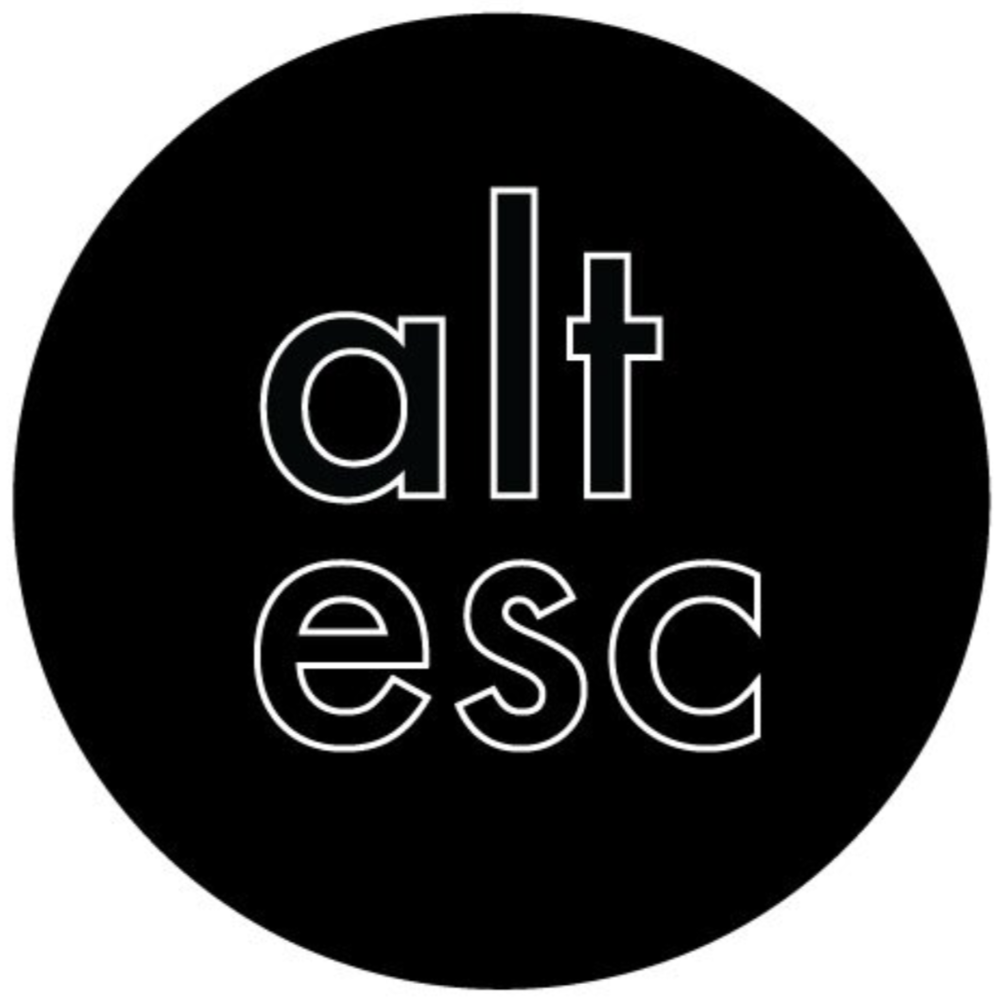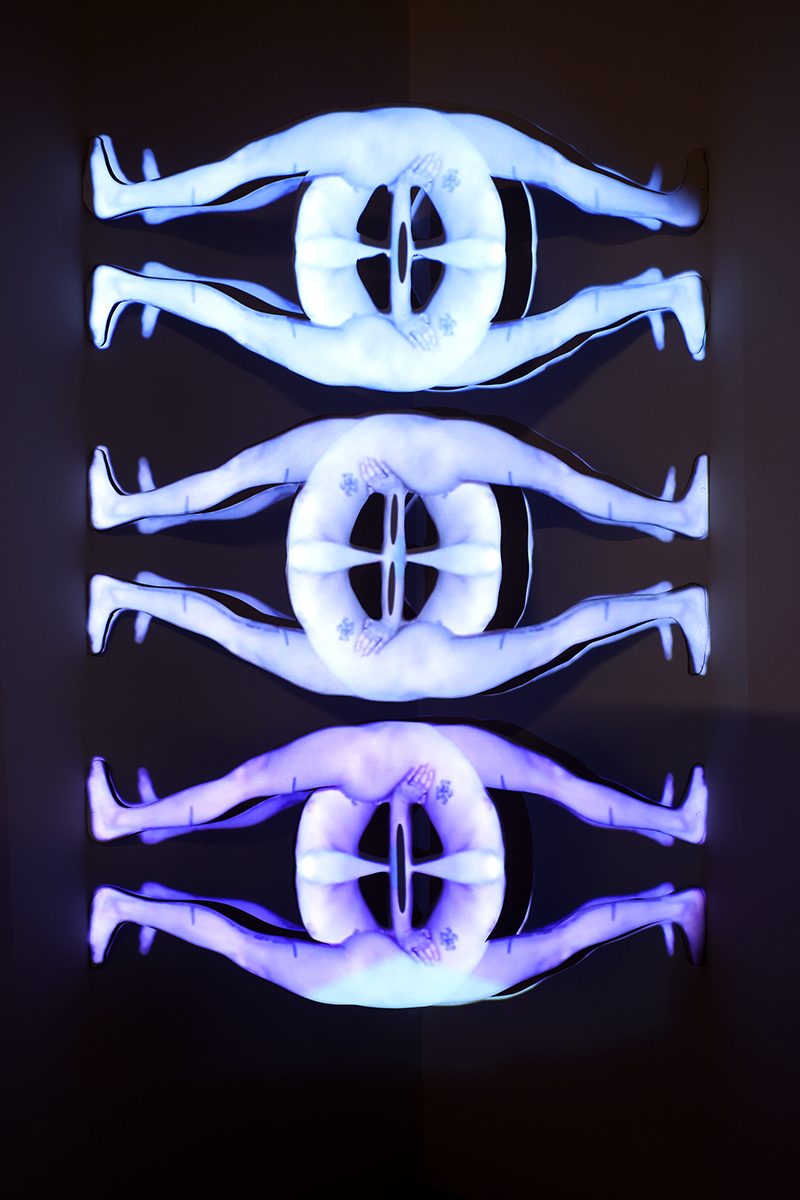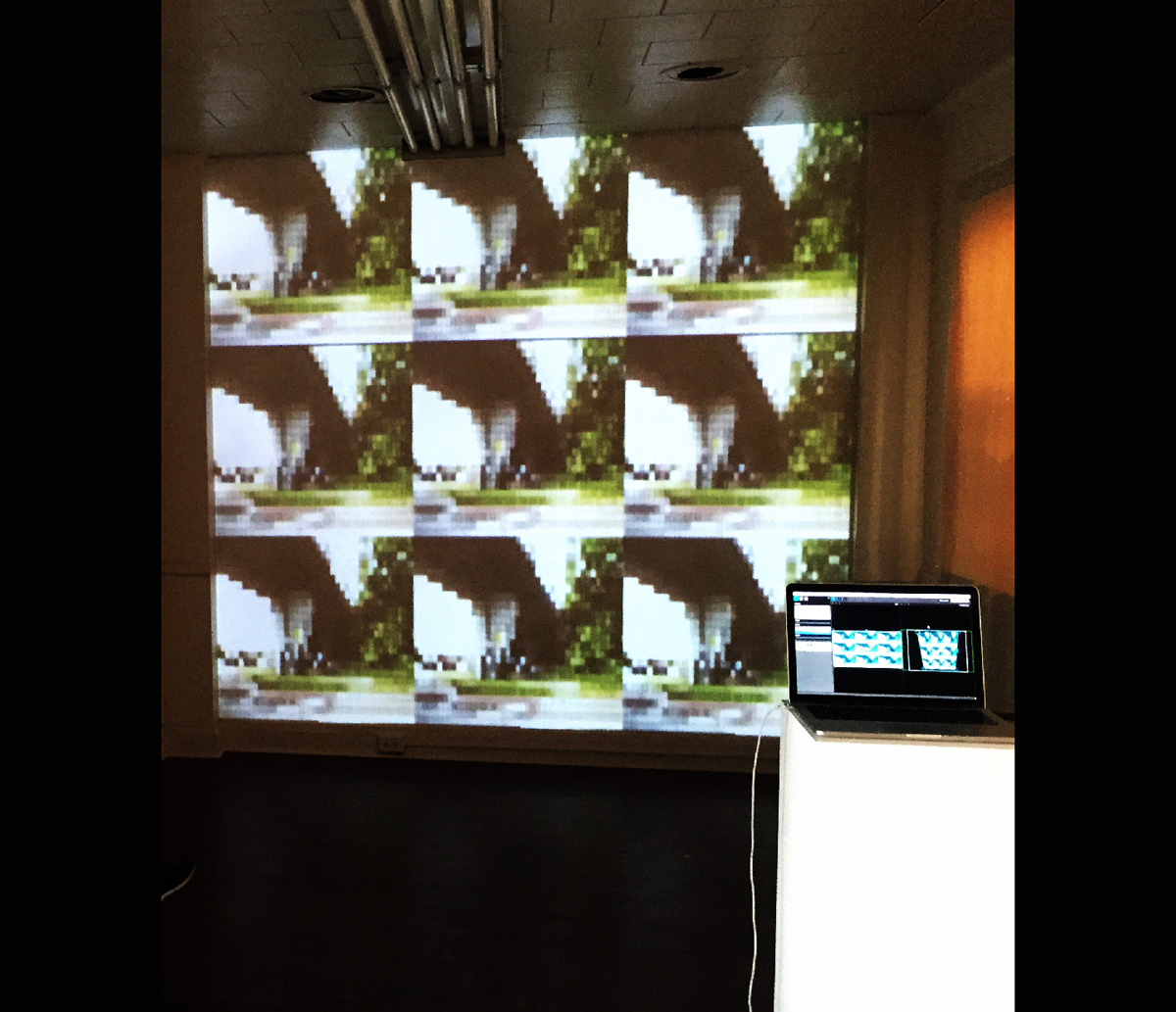KATIE DUFFY
Baltimore-based video artist Katie Duffy (b. 1987) treads the thin line between art and design challenging the concept of where one ends and the other begins. Using video, technology, and the virtual space of the internet as mediums, her work challenges and defies the many questions that have been imposed by art school.
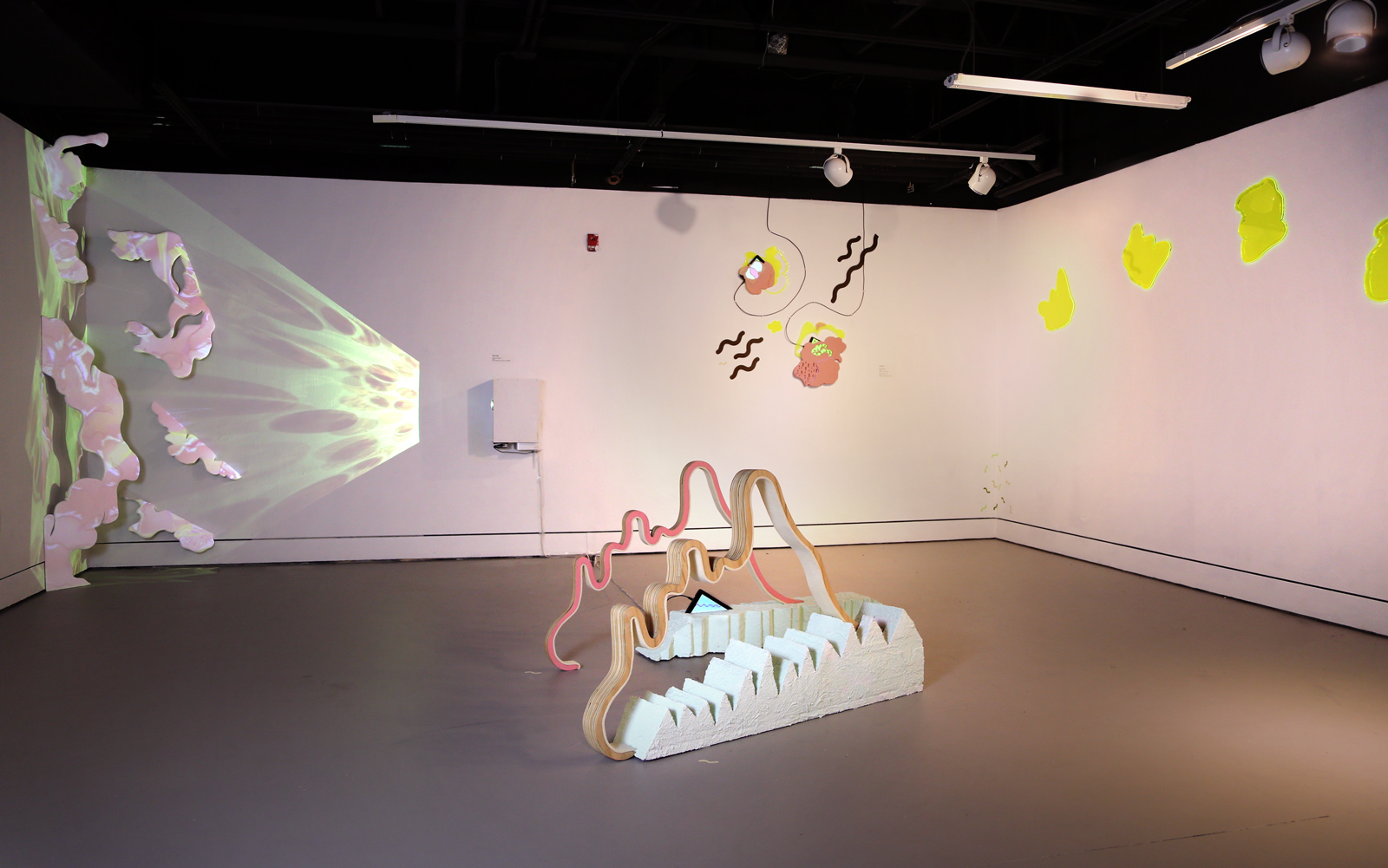
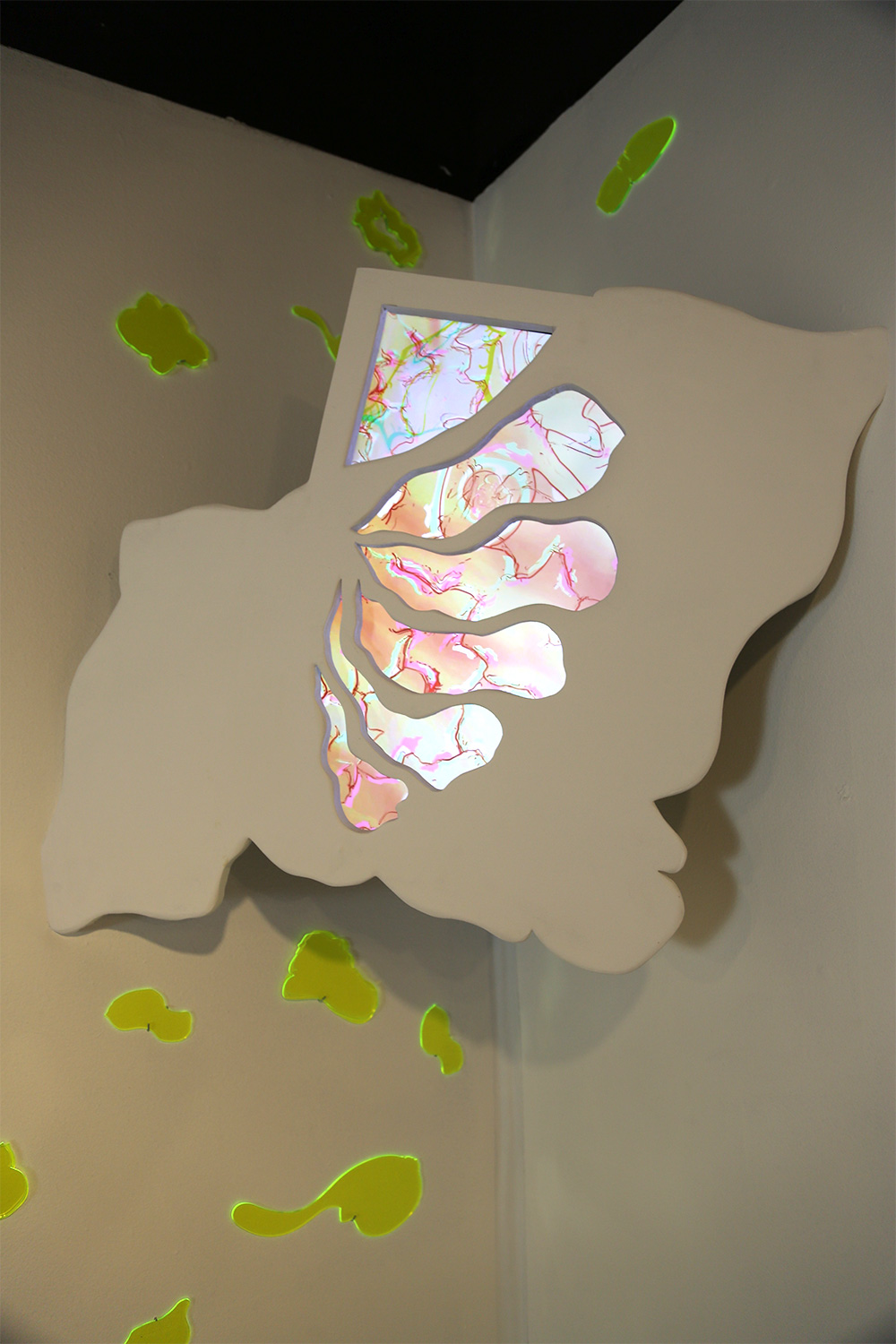
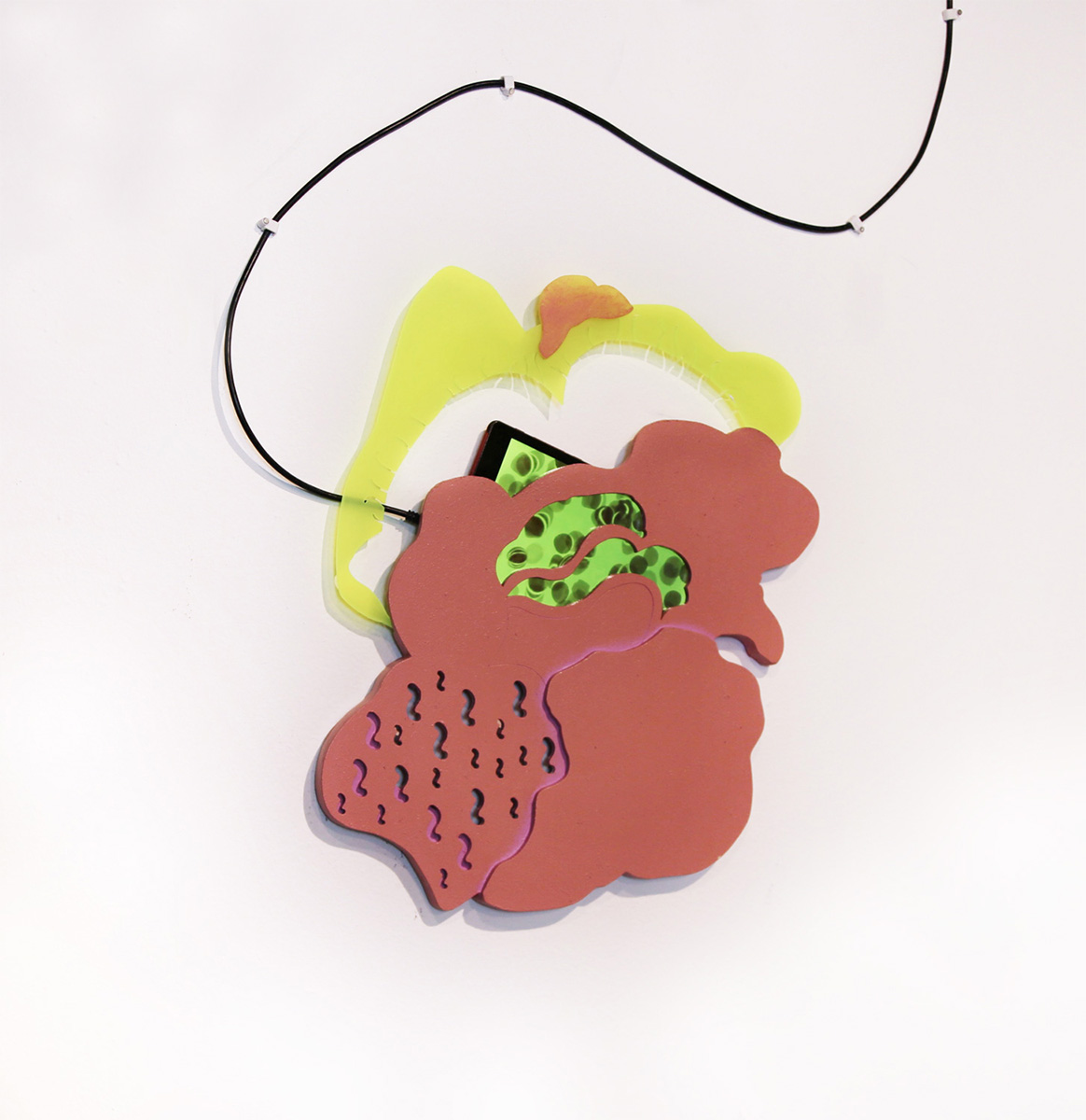
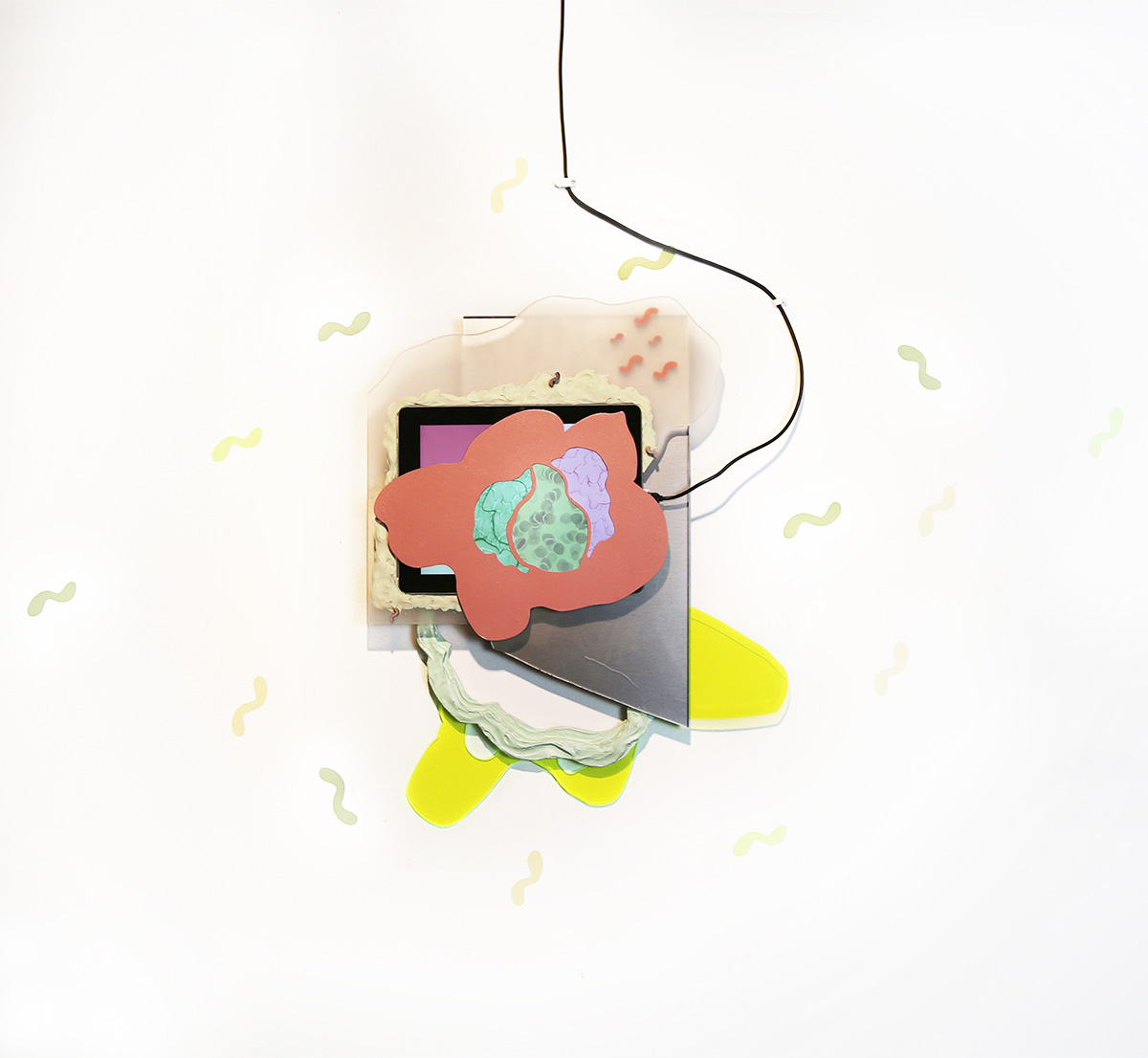
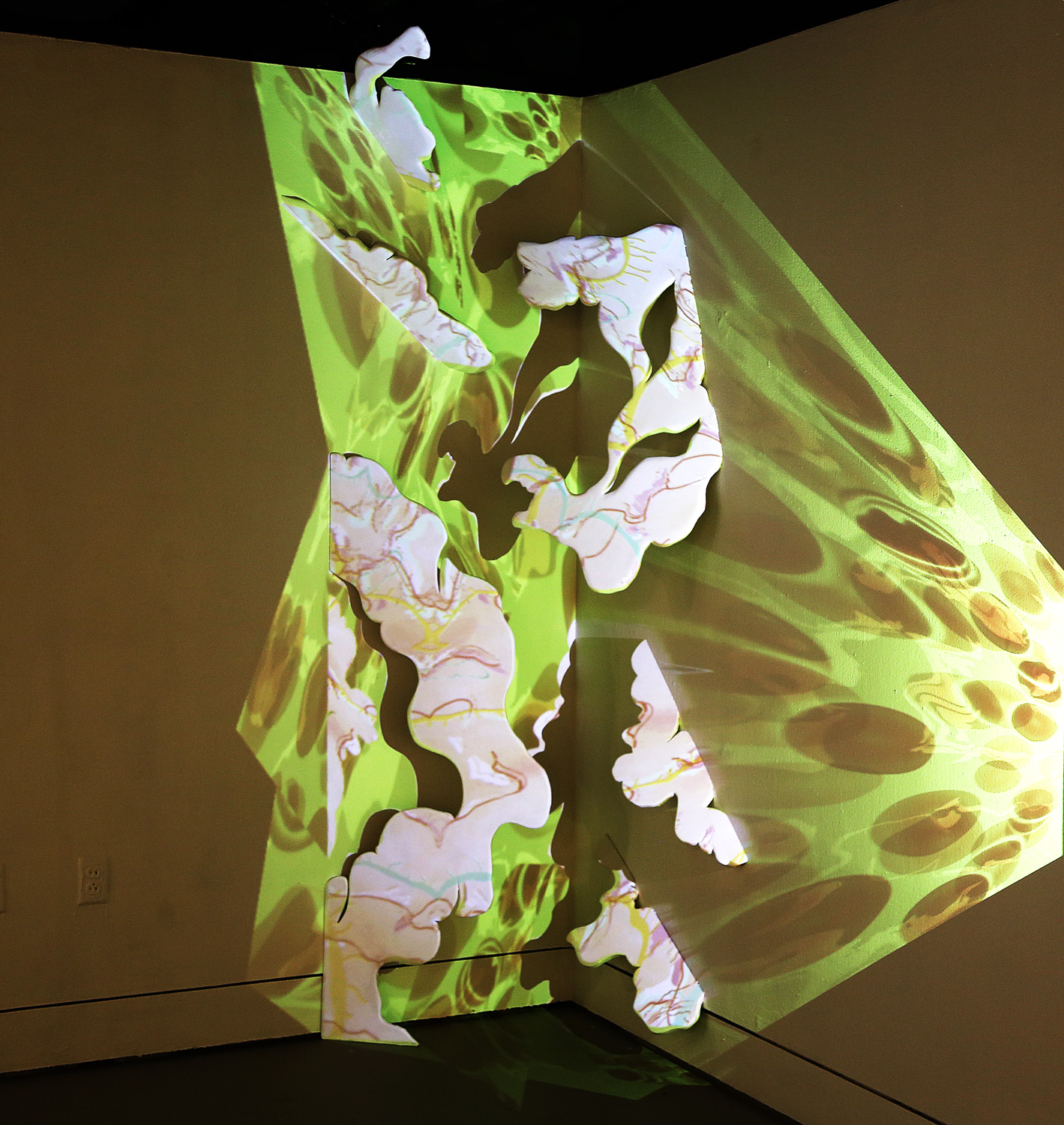
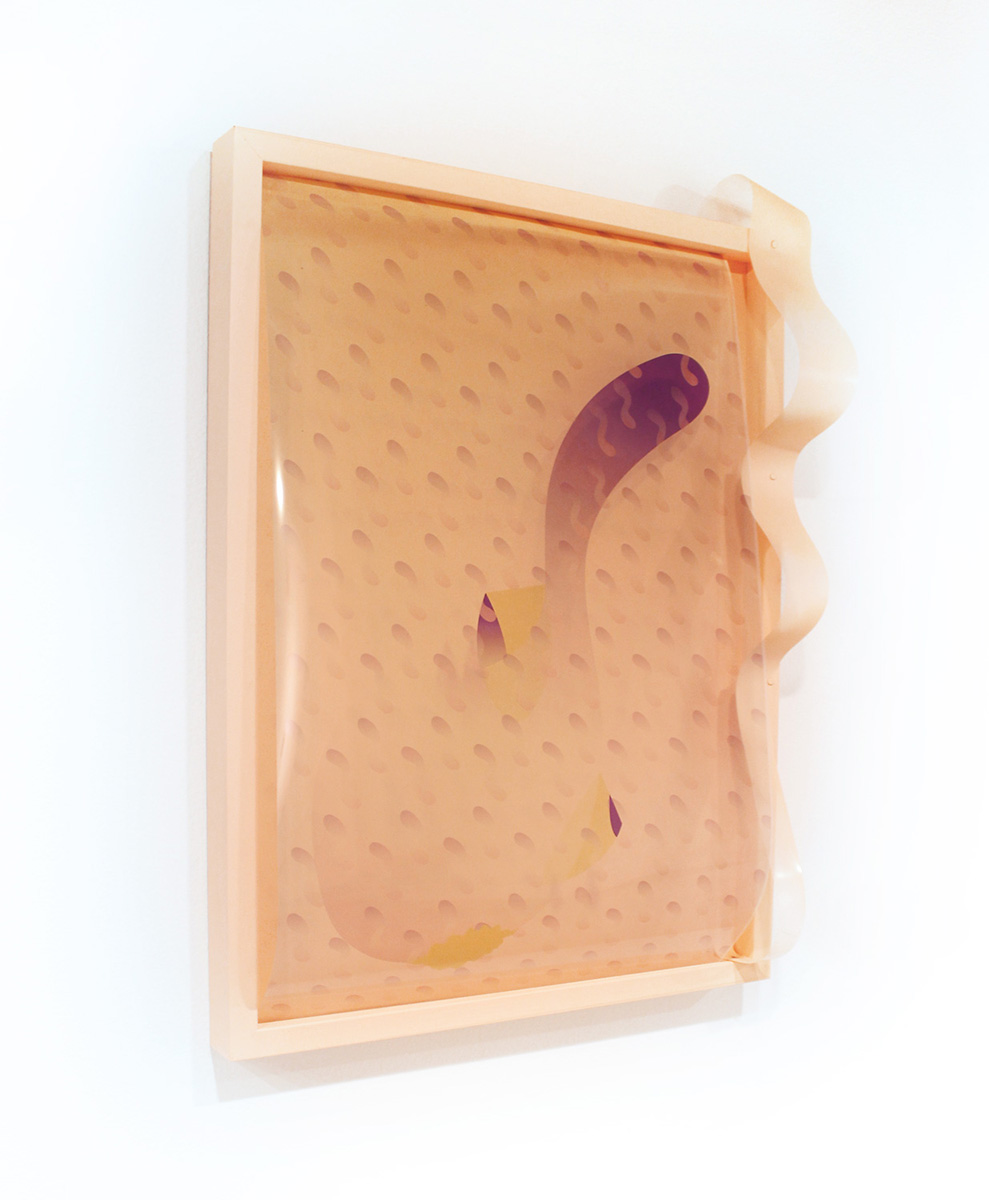
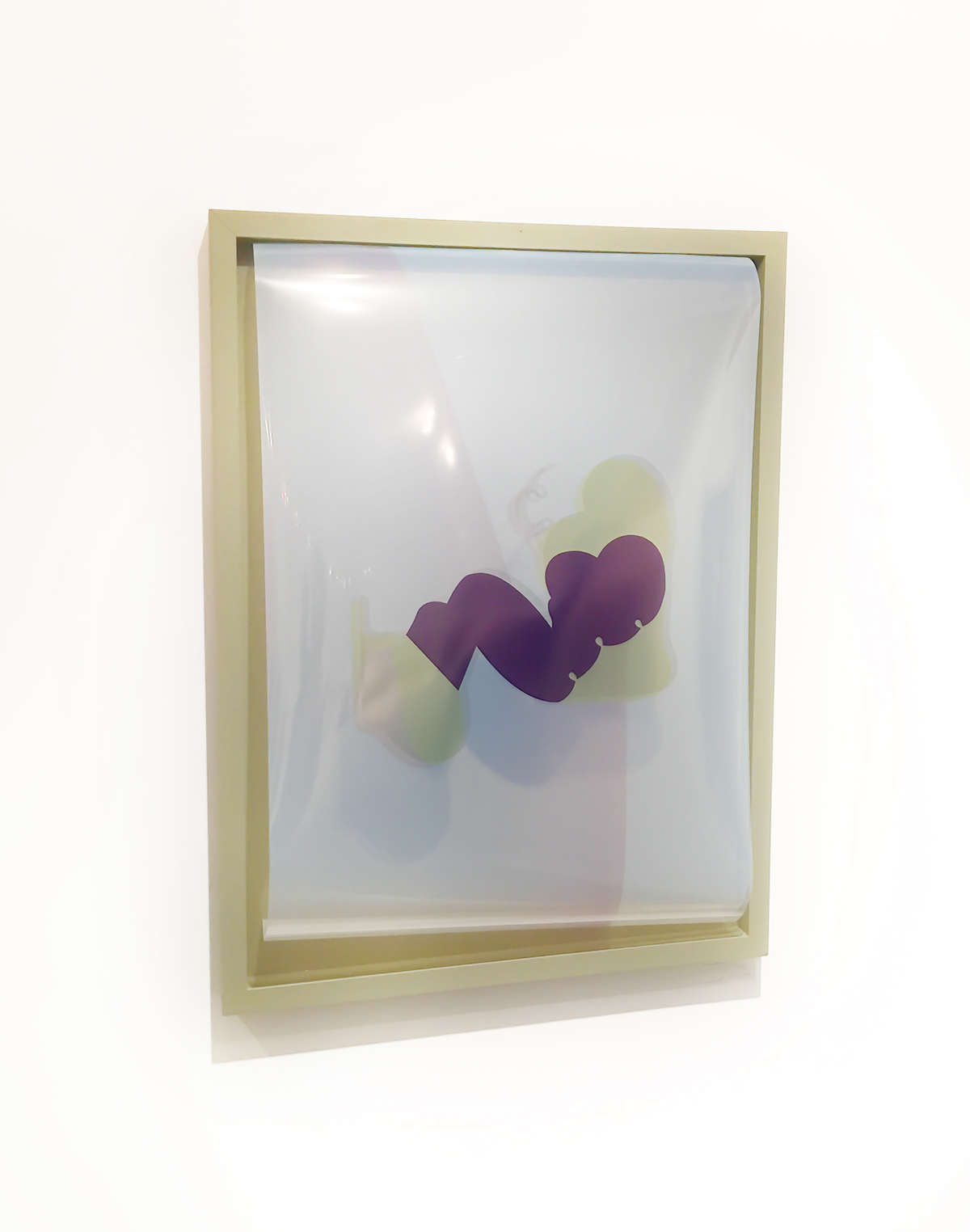
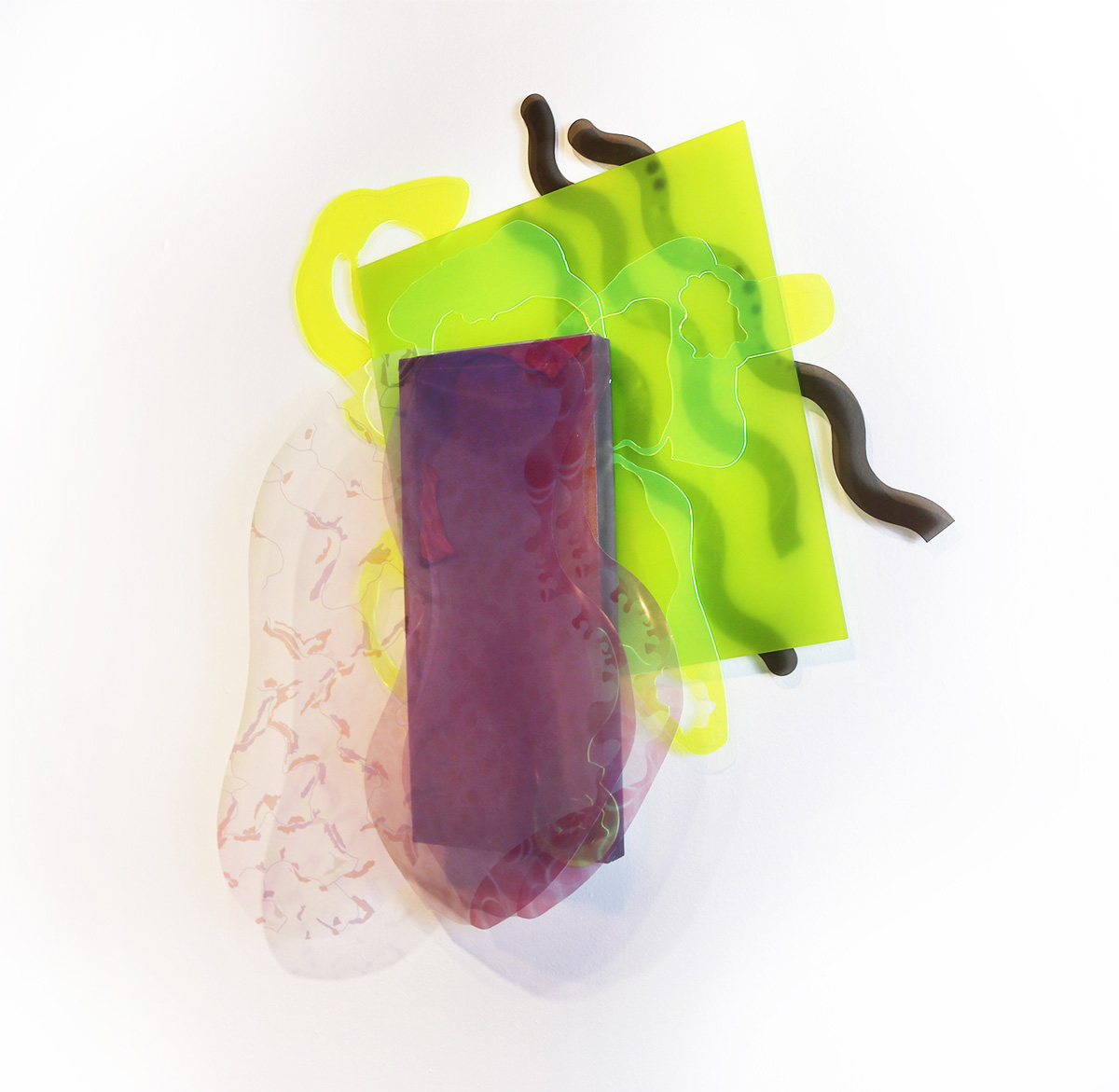
What materials do you love to work with most?
I love the idea of video as an actual material and I wanted to come up with some ways of working with some things that I love about video, so something that looks like it’s a screen, something that really gives you that polished feel. I love working with the idea of hiding the fourth wall and cramming it into a form. Basically I am trying to figure out how video can become a sculpture, a thing, a 3-D object.
With projection mapping or with a screen it’s all territory that feels like I’m doing something wrong, so I approach every show as an experiment and so I am always trying to see what I can change. It’s not permanent and I think it’s important to approach the material in this way because it is not static.
I make a lot of net art and I am trying to approach the browser as an actually space but it is not a space and it will never be a space. Virtual reality will never actually be a reality. There is so much weird stuff in the vague area and for me it comes out as playful and fun. I think a lot of artists will exist in this zone and put a lot of sinister commentary, which I’m totally down with, and I think its interesting. But I just really like the Internet and I love code and I teach this stuff and I generally am really excited about it. Breaking stuff and using things wrong is kind of what I think of my practice.
How do you feel about being an artist versus a designer?
For me the practical application is all the same. If I take a client into account, then it turns out being cold and it feels like design. When I make designs or website work the same aesthetic comes through but its more like you have to consider that audience. Here in order to make your own stuff and for it to be genuine you have to distance yourself from it while at the same time considering what the space is. When you are a designer your audience has to be everybody and you have to burn everything down to its most fundamental forms because it’s about translation. With art you do not have to be so direct with it. I am a person who exists in the slashes – designer / developer / artist. That’s where I want to be; I want to be in that grey zone.
There is a thing in design that I miss in the studio and that it is so collaborative because it is so client facing. You have to get the feedback. I don’t want to have ownership over anything. I want to disrupt the notions of me and disrupt the notion of who the artist is and bring authorship into that grey zone as well.
A lot of people have a set idea of what they want their art to be.
And I think that’s great. If that’s who you genuinely are as an artist or a maker then fuck yeah. But for me it just kind of feels cold and alien. The reason I make art is because it feels good. It’s like church in a way. It’s what you go back to. And I want it to be with other people and other artists. This idea of the artist as a sole genius is such bullshit because we steal from each other constantly and I think if we just admit that and go with it and give each other the due props then I think things would be a little less hard.
How do you choose collaborators?
Right now I have an online gallery called Browseras.com where I take on the role of the designer and taking someone’s physical installation and design it into a browser based installation. So I’ll see a piece that I like and I’ll give it insidious notions. One of the online collaborations is with CiCi Wu, she is a New York based Chinese artist who is kind of like myself, very interdisciplinary. The piece itself heavily referenced Chinese films of her childhood. For this piece we took a physical installation of CiCi's and translated it into a digital browser based installation. So when I first saw her initial installation I had this flash of "oh this would be so cool in the browser" and we went from there.
Another is with Nick Primo, we build these works in conjunction. I taught Nick a bit about video and he taught me about woodworking. So we ended up with this thing that looks like a weird offspring between our two practices. That takes away the loneliness of being an artist. You kind of give it up to the art gods a little bit; you never know what’s going to happen.
A lot of people are just honestly from the community we have here in Baltimore. I would love to start working with people outside of Baltimore. I just got professorship in Chicago so I will be moving there in July. I am really excited to start hooking up Baltimore ends and Chicago ends.
Are you in conversation with anyone who does body mods? They are pioneering out of garages.
I really need to get on that. It is interesting because its like where do we draw the line at that. I have a friend who has a split tongue but then you sort of cross the threshold where it is not accepted by society but what’s the difference and then enhancing your body. People have always been trying to live forever. I should probably start reaching out to them. What’s the difference between me covering my legs in tattoos and them modifying their body?
Do you a have a technology or biology background?
I started my adult life as a social worker. Then after school I realized it wasn’t for me, I wasn’t cut out for it. I was always into tech and being creative with it. The other part of it was that I was always an athlete, I was a crazy soccer player and had a constant awareness of my body as a vehicle. Being a female athlete and pushing your body to perform in a certain way and then having people thinking that they can just comment on it developed the interest in biological forms because I do not have a background in science. I think it comes from this hypersensitivity in reacting to your body. I am also really interested in feminist and queer theory and body politics.
Do you think physical galleries will ever be replaced by virtual galleries?
This is such an interesting question because I don’t think anyone has gotten it right yet. Are we supposed to go back to 90s virtual reality experiences? I have seen some people do it in an interesting format. In my opinion this clamshell, browser based experience can never emulate going and seeing physical work. I hope that someone hits it on the head and figures it out. It’s a shame because I love net art and I love browser based pieces but they never come across correctly in the gallery because they are meant to be viewed alone. Then they are not getting their due justice and being shown alongside a painting and they are not taken as seriously so I think it is a very interesting problem that I assume will be solved at some point.
Who would you want to collaborate with?
A dream collaboration would be Shana Moulton. She does a lot of performance that are reminiscent of Internet based experience. I usually see my role in collaborations starting out as more of a designer or technologist, but then the pieces start to come full circle and become a collaboration by two artists, and thus turn into "an art". Working in this way, my collaborators and I can use a design paradigm as more of a process of making, rather than design being the final outcome. Also Zoe Beloff, who was a badass multidisciplinary artist before it was cool to do that and experimenting with technology when it was still new. She was doing CD-ROM games and mazes and then a ton of installation and performance.
Do you find that teaching has affected your work?
Totally. I love teaching and it suits my personality. You get to be a ridiculous human and it is encouraged. A lot of times students think that I am there to tell them things and I know it all but my whole thing in life and as an artist is that I don’t know anything. So anything I think I know there’s probably a better and more interesting way to do it. I have learned more from teaching than I learned in school. When you are trying to teach yourself something you can be lazy and find shortcuts. When you are teaching you better be on it and you better have 10-15 metaphors to explain object oriented programming.
How did you get into art making?
I painted forever in undergrad and then I got really fascinated by technology and video. Having an understanding of where things come from makes you realize that you can start breaking them. I think our role as artists in terms of technology is how to use it wrong. What happens when you give somebody the power to use an object who doesn’t know how to use it? What new and interesting thing will happen? The Sony Portapak, the first commercially available video machine came in a little pack, the video camera was meant for consumer based but what artists started doing with them was totally wrong. Video has totally evolved from there. We wouldn’t have video on the Internet and video as journalism if we never gave that technology in the hands of artists. Our role as artists is to push the form. The difference between science and fine art is that in science you are expected to fail and your ideas come from failure. As artists we need to embrace failure a lot more.
Do you find that more and more girls are getting more comfortable using technology?
I am happy you said that. I have always been a painter and then I started running with a bunch of boys who did video art and I was like “I can do that and I can do it better than you”. But I have noticed there aren’t a lot of girls doing this stuff, which is why it has been my mission for the past few years learning to code. It’s a total boys club and I feel it’s so inaccessible to women. My number one thing is to bring more women to this conversation. I just got a grant to do the “hack the patriarchy” hackaton, where you don’t just code but make a curriculum So I am thinking of the female artists, but they are afraid because they have been low-key actively discouraged to do that kind of work and experiment in that way their entire lives. There is a book “Technologies and Intuition” that talks about however you want to embody femininity is up to you and this feminine idea of approaching technology as a mysticism is really fascinating.
What music are you listening to?
Alabama Shakes’ “Sound and Color” album on repeat. Kimbra’s “The Golden Echo” album. Neko Case forever and ever.
